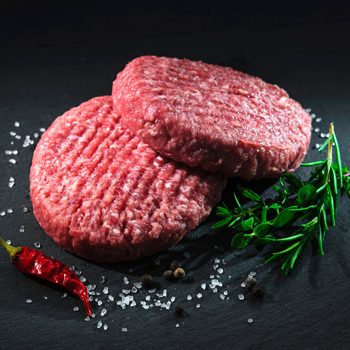Month: October 2017
‘Meat Industry 4.0’ Digitalisation: An Important Factor for Value Creation
อุตสาหกรรมเนื้อสัตว์ 4.0 ดิจิทัลไลเซชัน: ปัจจัยสำคัญในการสร้างมูลค่า
By: IFFA
www.iffa.com
ตั้งแต่มีการประกาศไปเมื่อมากกว่า 5 ปีที่ผ่านมา จนถึงตอนนี้การปฏิวัติที่ริเริ่มขึ้นโดยแนวคิดอุตสาหกรรม 4.0 ก็ยังไม่ก่อตัวเป็นรูปเป็นร่างขึ้นมากนัก แต่กลายเป็นว่ามีการเปลี่ยนแปลงโดยนำเทคโนโลยีดิจิทัลมาปรับใช้เข้ามาแทนที่ในขั้นตอนยิบย่อยต่างๆ มากมาย ซึ่งเป็นแนวทางที่พบเห็นได้ในหลายขั้นตอนของการทำงาน ตั้งแต่ในด้านการตรวจสอบติดตามผลิตภัณฑ์และขั้นตอนการผลิต เทคโนโลยีการติดฉลาก บรรจุภัณฑ์ การกระจายสินค้า การบริการ และการซ่อมบำรุง โดยมีซอฟต์แวร์ เซ็นเซอร์ ข้อมูล และเครือข่ายเป็นผู้เล่นหลักๆ ในกระบวนการเหล่านี้
อุตสาหกรรม 4.0 จำเป็นต้องมีหมายเลขประจำเครื่องคอมพิวเตอร์จำนวนมหาศาล
ในอนาคตอันใกล้ เครื่องจักรและโรงงานจะไม่เพียงให้ข้อมูลด้านสถานะและเงื่อนไขของระบบและขั้นตอนการผลิตที่สำคัญต่างๆ เท่านั้น แต่ยังจะสามารถสื่อสารระหว่างกันได้เองและเข้าแทรกแซงกระบวนการผลิต เพื่อแก้ไข ปรับปรุงให้เหมาะสม และเพิ่มประสิทธิภาพของทุกระบบโดยไม่ต้องมีคนป้อนข้อมูลอีกด้วย ทำให้จำเป็นต้องมีเซ็นเซอร์ประสิทธิภาพสูงที่เชื่อมต่อกันภายในเป็นจำนวนมหาศาลสำหรับการตรวจสอบติดตามผลิตภัณฑ์ เครื่องจักร และข้อมูลของกระบวนการต่างๆ แต่ในตอนนี้ IPv4 ซึ่งเป็นอินเทอร์เน็ตโปรโตคอลรุ่นเก่าไม่สามารถสร้างหมายเลขประจำเครื่องคอมพิวเตอร์ หรือ IP address ได้เพียงพอต่อความต้องการ ดังนั้น งานเร่งด่วนที่สุดในตอนนี้คือ ต้องยกระดับอินเทอร์เน็ตให้สูงขึ้นเป็น IPv6 ซึ่งจะสามารถเพิ่มหมายเลขประจำเครื่องคอมพิวเตอร์ได้อย่างไม่จำกัดเพื่อใช้กับเซ็นเซอร์ อุปกรณ์ เครื่องจักร และโรงงาน อันเป็นการเปลี่ยนแปลงที่กำลังเกิดขึ้นทั่วโลก
ระบบเซ็นเซอร์แบบเครือข่ายคือกุญแจสำคัญ
เซ็นเซอร์ที่เชื่อมต่อตรงหรือต่อแบบไร้สาย รวมถึงตัวเก็บข้อมูลต่างๆ ถูกนำมาใช้อย่างแพร่หลายมากขึ้นเรื่อยๆ โดยนำมาใช้ในการวัดอุณหภูมิ ความชื้น ความหนืด ปริมาณการใช้ไฟฟ้า แรงบิด ความดัน การไหลของวัสดุ น้ำหนัก เป็นต้น โดยเทคโนโลยีที่โดดเด่น คือ RFID (Radio Frequency Identification) ป้ายหรือแท็ก RFID จะแลกเปลี่ยนข้อมูลและส่งสัญญาณแบบไร้สายกับตัวอ่านและเขียนข้อมูลในเครื่องจักรสำหรับกระบวนการแปรรูป รวมถึงระบบการขนส่ง ระบบห้องเย็น และระบบการจัดเก็บ เครื่องส่งสัญญาณนี้สามารถบูรณาการเข้าได้กับแทบทุกอย่าง ตั้งแต่ตะขอเกี่ยวในโรงเชือด แท่นเคลื่อนย้าย ไปจนถึงตู้คอนเทนเนอร์ ลังหรือบรรจุภัณฑ์ใส่เนื้อสัตว์ ทั้งยังควบคุมได้ทั้งเครื่องจักรและโรงงาน รวมถึงจดบันทึกผลิตภัณฑ์และสภาวะเงื่อนไขในการผลิตตลอดห่วงโซ่คุณค่า การเข้าถึงข้อมูลต่างๆ ได้ตลอดเวลาเช่นนี้ช่วยเพิ่มความโปร่งใสในการผลิต ควบคุม และเพิ่มประสิทธิภาพได้เป็นอย่างมาก นอกจากนี้ยังให้ข้อมูลที่เชื่อถือได้ ทำให้ผู้ผลิตสามารถตรวจสอบย้อนกลับผลิตภัณฑ์และกระบวนการผลิตได้
Announced more than five years ago, the revolution to be initiated by Industry 4.0 has failed to materialise so far. Instead, it appears that the digital transformation is taking place in numerous small evolutionary steps. The direction being taken is already shown by a wide range of applications from the fields of product and processes monitoring, labelling technology, packaging, distribution, logic, servicing and maintenance, whereby the main players are software, sensors, data and networking.
Industry 4.0 Needs Innumerable IP Addresses
In future, machines and plant will not only supply independent information about the condition of all important processes and systems but also communicate with each other and intervene in production processes to correct and optimise them without any human input. This calls for innumerable interlinked high-performance sensors to monitor product, machine and process data. However, the previous internet protocol, IPv4, cannot supply the huge number of IP addresses required for this. Therefore, the most urgent task is the rapid conversion to the new internet standard, IPv6, which is capable of providing an almost infinite number of IP addresses for sensors, devices, machinery and plant. This changeover is currently taking place all around the globe.
Networked Sensors are the Key
Sensors with direct or wireless network connections, as well as data loggers, are increasingly being used for measuring the temperature, humidity, viscosity, electricity consumption, torque, pressure, material flow, weight, etc., whereby RFID (Radio Frequency Identification) technology stands out in this connection. RFID tags exchange information and signals wirelessly with the read/write devices of the various processing machines and the transport, refrigeration and storage systems. Integrated into everything from slaughtering hooks and transport cradles to containers, E2 meat crates or packaging, they can control machinery and plant, not to mention register all product and process conditions along the value chain. Available at all times, the process data provide for greater production transparency, control and efficiency and represent a reliable stock of information for manufacturers with regard to the traceability of products and batches.
